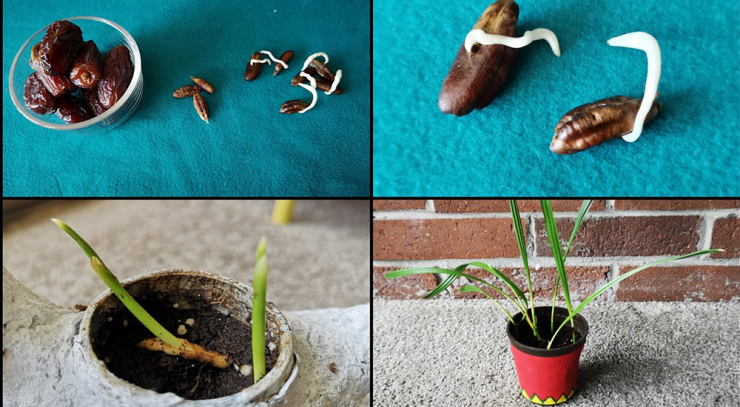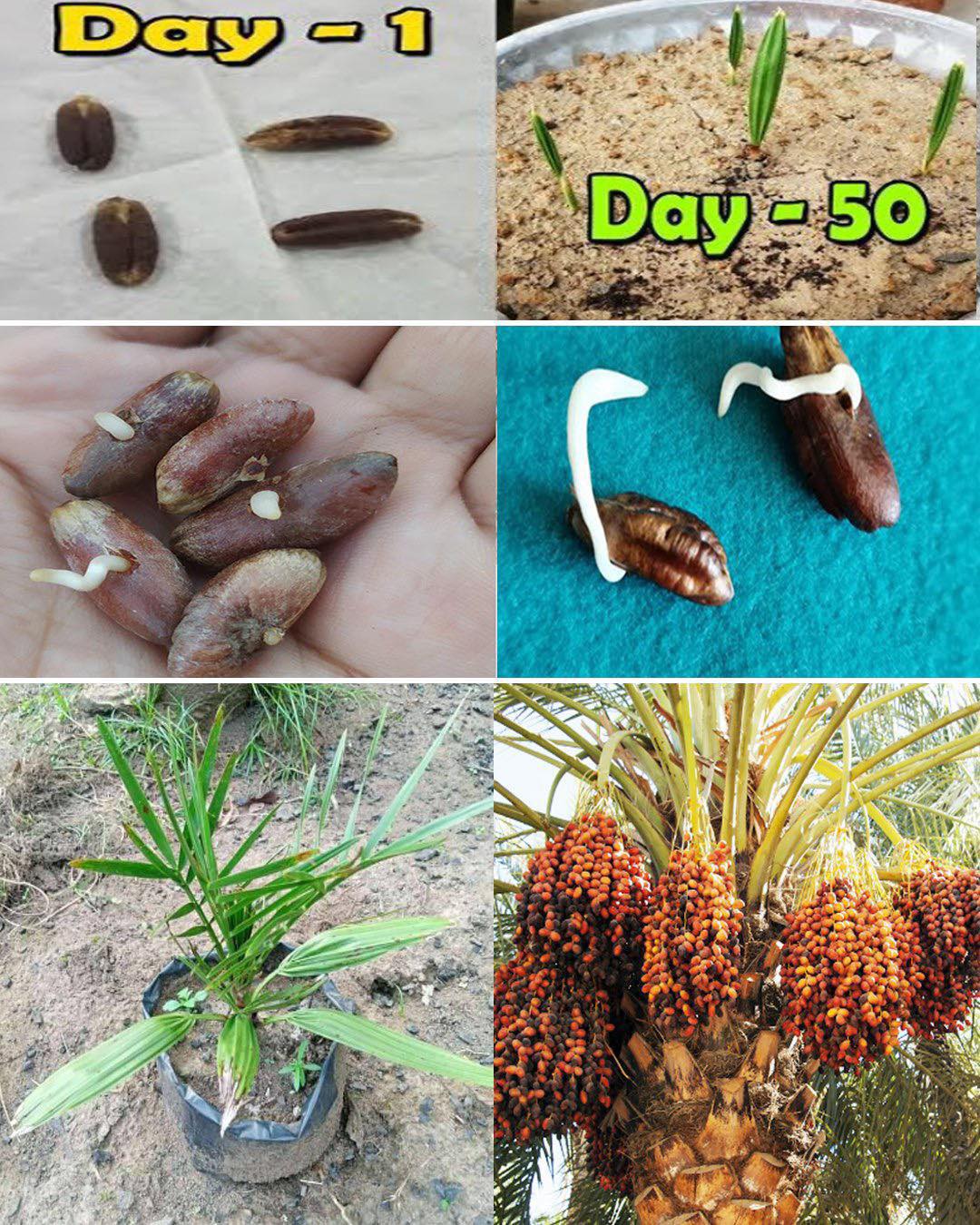The date palm tree, scientifically known as Phoenix dactylifera, is not only an iconic symbol of desert landscapes but also a source of delicious and nutritious dates. Growing a date palm tree from seed can be a rewarding and educational experience. However, it’s important to note that achieving a 100% success rate in this endeavor can be challenging due to various factors. In this article, we’ll provide you with a comprehensive guide on how to grow a date palm tree from seed, with valuable tips to increase your chances of success.

Materials You’ll Need:
Before you begin, gather the following materials:
Fresh Date Seeds: Obtain fresh date seeds from ripe dates. Ensure they have not been roasted, salted, or dried. The fresher the seeds, the better your chances of success.
A Container: You will need a suitable container to germinate the date seeds. A small pot with drainage holes or a plastic container will suffice.
Potting Mix: Choose a well-draining potting mix that is slightly sandy. Date palms thrive in well-drained soil.
Plastic Wrap or Clear Plastic Bag: You’ll use this to create a mini greenhouse effect to maintain humidity.
Room with Constant Temperature: Date seeds require consistent warmth for germination, so find a location with a stable temperature around 75-85°F (24-29°C).
Step-by-Step Guide:
1.Preparing the Date Seeds:
Start by removing the seeds from ripe dates. Rinse them gently to remove any remaining date flesh. Do not let the seeds dry out.
2.Scarify the Seeds (Optional):
To enhance germination, you can scarify the seeds by gently nicking or filing a small section of the hard seed coat. This allows water to penetrate the seed more easily. While this step is optional, it can increase your chances of success.
3.Germinating the Seeds:
Fill your pot or container with the well-draining potting mix. Plant the date seeds about an inch deep in the soil, leaving the pointed end facing down.
Water the soil thoroughly to ensure even moisture. The soil should be consistently moist but not waterlogged.
4.Create a Mini Greenhouse:
Cover the pot or container with plastic wrap or place it inside a clear plastic bag. This will create a humid environment similar to a greenhouse. Ensure the plastic doesn’t touch the seeds directly.
5.Provide Consistent Temperature:
Place the pot in a room with a consistent temperature between 75-85°F (24-29°C). Date seeds require warmth to germinate.
6.Be Patient:
Germination can take several weeks to a few months. Check the pot regularly for signs of sprouting. Once the seedling emerges, you can carefully remove the plastic covering.
7.Transplant the Seedling:
When your date palm seedling has grown to a suitable size with a few leaves, it’s ready to be transplanted into a larger pot or directly into the ground if the climate permits.

8.Care and Maintenance:
Date palm trees require a sunny location, well-drained soil, and regular watering. Be patient as it can take years before your tree bears fruit.
While a 100% success rate in growing date palm trees from seed is challenging due to various factors such as seed quality and environmental conditions, following this guide can significantly increase your chances of success. Growing date palms is a long-term project that demands patience and dedication, but the reward of having your own date palm tree is truly unique. Happy gardening!
News
JJ Redick reacts to Luka Doncic trade for Anthony Davis
In one of the most jaw-dropping moves of the season, the NBA landscape was rocked by the blockbuster trade involving Luka Dončić and Anthony Davis—a swap that has sent ripples of excitement, disbelief, and heated discussion through the league. Among…
Anthony Davis FULL reaction to trade to Mavericks for Luka Doncic
In a blockbuster move that sent shockwaves through the NBA and left fans reeling, Anthony Davis has been traded to the Dallas Mavericks in exchange for Luka Dončić. In the immediate aftermath of the news, Davis took to the media…
Shaq reacts to Dallas Mavericks wanting Kevin Durant after Luka-AD trade 👀
In the constantly shifting world of the NBA, trade rumors and blockbuster moves are a regular part of the season’s drama. The latest twist has fans buzzing: the Dallas Mavericks have reportedly set their sights on acquiring Kevin Durant in…
Donovan Mitchell FILTHY poster dunk on Kristaps Porzingis 😳
In a game filled with high-intensity moments and jaw-dropping highlights, one play in particular has left fans and analysts buzzing about Donovan Mitchell’s latest display of athleticism. Early in the contest, with the atmosphere already charged by an evenly matched…
Joel Embiid hits go-ahead bucket vs Mavs then chats with Anthony Davis after game
In one of the most thrilling contests of the season, Joel Embiid delivered a clutch performance against the Dallas Mavericks, punctuating the game with a go-ahead bucket that sent the home crowd into a frenzy. The atmosphere in the arena…
D’Angelo Russell game winner as Nets hit two 3’s in 3 seconds to win vs Rockets 😱
In one of the most electrifying moments in recent NBA history, D’Angelo Russell delivered an unforgettable game-winner that left fans and commentators in complete awe. With the Brooklyn Nets locked in a tense battle against the Houston Rockets, the outcome…
End of content
No more pages to load











